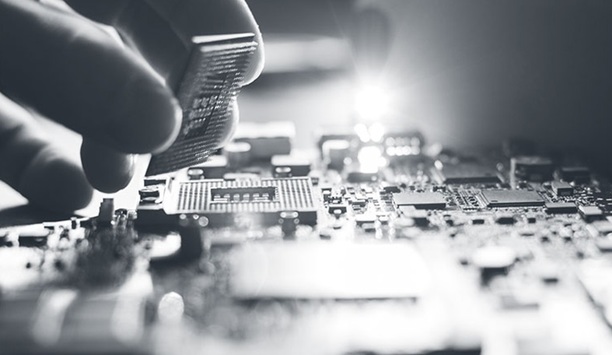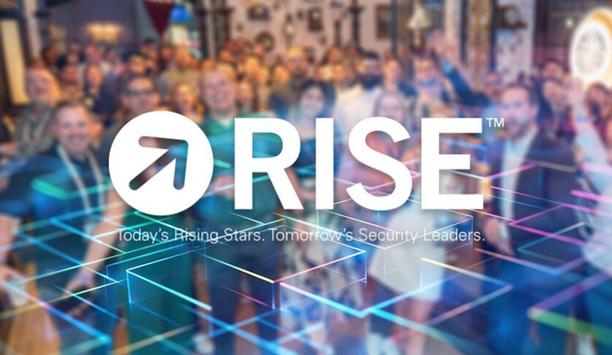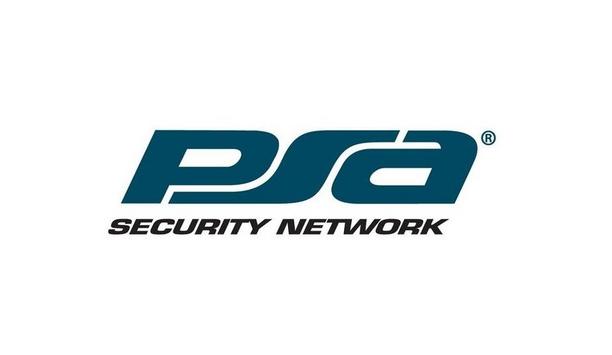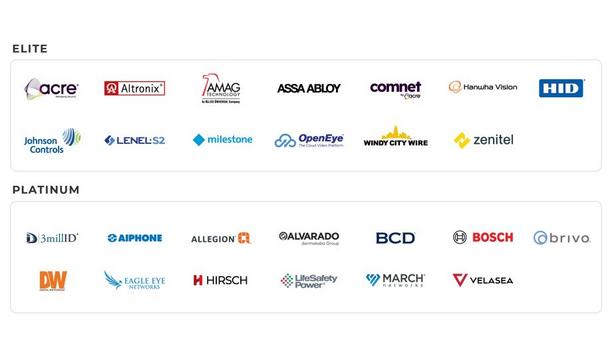BCD International, Inc. - Experts & Thought Leaders
White papers from BCD International, Inc.
Hybrid hyperconverged systems benefit growing storage and retention needs
DownloadLatest BCD International, Inc. news & announcements
The Security Industry Association (SIA) has named new members and leadership of the steering committee for SIA RISE, a community that fosters the careers of young professionals and emerging pioneers in the security industry. Dakota Mackie of Northland Controls serves as chair, with Kelly Ann Christensen of BCD now serving as vice chair. In these roles, Mackie and Christensen ensure that RISE delivers educational content and networking opportunities to young professional employees and rising stars at SIA member companies, college students and recent graduates interested in the global security industry. Prior roles of Mackie Mackie joined Northland Controls in 2020 as the content marketing specialist Dakota Mackie is the business development manager at Northland Controls. Prior to joining the security industry, she worked as a client services coordinator at the Washington Commanders (then the Washington Redskins) before beginning a role with a military nonprofit, Luke’s Wings, where she ultimately ended her tenure as the executive director. Mackie joined Northland Controls in 2020 as the content marketing specialist, and in her current role, she is responsible for supporting the entire sales cycle with a focus on the growth of Northland’s managed services offering. Mackie has been honoured as a SIA Women in Security Forum Power 100 honouree and is a graduate of the University of South Carolina. Outside of work, she has a passion for travelling the world and learning about new cultures. Prior roles of Ann Christensen Kelly Ann Christensen is a digital marketing specialist at BCD, an IP video data infrastructure manufacturer, and has spent nearly five years specialising in the security industry. With a focus on digital advertising and marketing analytics, she has certifications in ROI marketing, marketing management, SEO and PPC marketing. Prior to becoming RISE vice chair, she served as head of the RISE Scholarship subcommittee, which provides scholarships to young professionals in the security industry to assist with furthering education, attending industry events, obtaining new certifications and furthering their professional development, and was awarded the SIA RISE Scholarship in 2022 and one of SIA’s 2024 Sandy Jones Volunteers of the Year. Christensen has also participated in SIA’s Talent Inclusion Mentorship Education (TIME) program, which is designed to promote diversity, equity, inclusion and empowerment of underrepresented identities in the security industry by creating a well-defined pathway for learning and development. SIA RISE Steering Committee The SIA RISE Steering Committee now includes the following members: Chair: Dakota Mackie, business development manager, Northland Controls (Term ends 2025) Vice Chair: Kelly Ann Christensen, marketing manager, BCD (Term ends 2027) AcceleRISE Subcommittee Chair: Erin Grippo, senior manager, product operations, Brivo (Term ends 2025) Content Subcommittee Chair: Tanner LaRocque, marketing director, Evolon (Term ends 2026) Scholarship Subcommittee Chair: Kristin Shockley, manager, segment marketing, Genetec (Term ends 2026) Diversity, Equity & Inclusion Subcommittee Chair: Tristin Vaccaro, owner, Vaccaro Copywriting & Marketing Solutions (Term ends 2025) Jonah Azarcon, deputy project pioneer, M.C. Dean (Term ends 2027) Krystina Beach, marketing communications manager, ASSA ABLOY (Term ends 2027) Andres Capous, regional sales manager, Velasea (Term ends 2027) Joey Joy, distribution channel account manager, March Networks (Term ends 2027) Ryan Knoll, business relations manager, Pro-Tec Design (Term ends 2027) Tim Loth, sales engineer team lead, i-PRO (Term ends 2026) Jackie Paryz, director, sales, technology solutions, Securitas (Term ends 2027) Itzel Portillo, marketing specialist, Allegion (Term ends 2027) Amanda Powell, marketing manager, Boon Edam (Term ends 2025) Nicole Rigby, team lead, distribution operations, Axis Communications (Term ends 2026) Keyser Santana, global security strategist and business execution senior manager, Pratt & Whitney (Term ends 2025) Constantine Tremouliaris, integrated solutions specialist, ASSA ABLOY (Term ends 2025) KeShia Thomas, brand and solutions manager, Allegion (Term ends 2027) Mfon Ubaha, business development manager, i-PRO (Term ends 2027) Sarah Webel, human resources generalist, SAGE Integration (Term ends 2027) Lauren Yonis, global events manager, acre (Term ends 2027) New RISE committee members “SIA RISE is a vibrant community of accomplished young security pioneers and driven industry newcomers that offers a robust array of opportunities for learning, professional development, engagement and relationship building in our industry. This community and its meaningful initiatives would not be possible without our dedicated, talented volunteers, like RISE chair Dakota Mackie, new vice chair Kelly Ann Christensen and our subcommittee chairs, Erin Grippo, Tanner LaRocque, Kristin Shockley and Tristin Vaccaro,” said SIA CEO Don Erickson. “We welcome our new RISE committee members, and we thank outgoing committee members and past RISE chairs Jake Brown and Matt Feenan for their leadership and support over the years. We look forward to working together with the 2025 RISE committee to further advance the reach and impact of RISE and its programs and propel the security workforce of the future.” RISE Awards and annual AcceleRISE conference SIA RISE is a community that fosters the careers of young professionals in the security industry. SIA RISE’s offerings include an annual scholarship to further young talent’s education and career goals, fun in-person and virtual networking events for young professionals, the TIME program for early and mid-career professionals, recognition of new and emerging industry pioneers through the 25 on the RISE Awards and the annual AcceleRISE conference – an essential experience for young security talent. The SIA RISE community is open to all employees at SIA member companies who are young professionals under 40 or have been in the security industry for less than two years.
The PSA Network (PSA), the world’s largest consortium of professional systems integrators, announced the lineup of speakers and sponsors for PSA TEC 2025 (TEC) in Aurora, Colorado, March 9-12, at the Gaylord Rockies Resort & Convention Centre. “PSA TEC 2025 is shaping up to be an amazing event from the industry-pioneering education and certifications to access to the top manufacturers in the industry,” said Matt Barnette, president and CEO of the PSA Network. “The power of PSA truly lies in the relationships we foster and cultivate, and TEC is another extension of this.” TEC’s Industry Unplugged sessions This year’s educational lineup is led by keynote speaker, Ryan Estis. Estis will deliver the presentation: Sell for Impact-Delivering Value and Winning Customers in the New Economy. Lee Odess, the voice of the global access control industry, will host TEC’s Industry Unplugged sessions interviewing executives like Tom Cook from Hanwha Vision and Michael Wong of Genea. Multiple other breakout sessions, certifications and mainstage sessions will also take place. Latest innovations and relationships TEC 2025 is exclusive to PSA owners, members and sponsors providing premier educational content TEC 2025 is exclusive to PSA owners, members and sponsors providing premier educational content and networking opportunities between integrators and technology partners. Over the four days, integrators will have ample opportunities to meet with technology partners, learn about their latest innovations and solidify business relationships. Sponsors This year’s sponsors are industry-pioneering manufacturers and solutions providers, including: Summit Altronix Corporation High Country AMAG Technology Hanwha Vision HID Johnson Controls Milestone Zenitel Front Range 3millID Acre Security Aiphone Alvarado ASSA ABLOY BCD Bosch Digital Watchdog Farpointe Data LenelS2 LifeSafety Power March Networks OpenEye SECLOCK Solutions360 Velasea Vicon Wavelynx Windy City Wire Western Slope Ai-RGUS AMG Security Genea Hirsch IML Security Supply NETGEAR ProdataKey Tabletop ALConsulting D-Tools GSA Schedules Jetbuilt NSCA Plante Moran Snellings Walters Insurance Agency SPRX Swell Zitko First Time Session Sponsor Vector Firm Access to networking events “PSA TEC 2025 would not be possible with our amazing sponsors,” said Brittany Board, director of technology partners at the PSA Network. “We are thankful for their support and looking forward to another opportunity to drive connections and business opportunities.” Registration for TEC is open and provides access to all networking events, meals and conference courses.
The PSA Network, the world’s largest consortium of professional systems integrators, announced the 25 members of the PSA Partner Program (P3) for 2025. The P3 program is a performance-driven initiative tailored for technology partners, evaluating and categorising them based on criteria reflecting their impact and achievements within the network. PSA integrators Partners meeting the annual sales threshold are assessed using a weighted scale Partners meeting the annual sales threshold are assessed using a weighted scale. Their cumulative scores determine their placement within two tiers: "Elite" and "Platinum." These partnerships enable PSA integrators to enhance their offerings, deliver exceptional value to end users, and maintain a competitive edge in the market. Unmatched technology solutions "Advancing our mission to elevate the security industry, we are excited to announce our 2025 strategic P3 partnerships with top technology manufacturers,” said Matt Barnette, president and CEO of the PSA Network. “Collaborating with these valued industry pioneers enables us to deliver unmatched technology solutions to our members and their customers." P3 2025 Elite and Platinum partners P3 2025 Elite partners include: acre security, Altronix, AMAG Technology, ASSA ABLOY, etc. P3 2025 Elite partners include: acre security, Altronix, AMAG Technology, ASSA ABLOY, ComNet by acre security, Hanwha Vision, HID, Johnson Controls, LenelS2, Milestone Systems, OpenEye, Windy City Wire and Zenitel. P3 2025 Platinum partners include: 3MillID, Aiphone, Allegion, Alvarado, BCD, Bosch Security and Safety Systems, Brivo, Digital Watchdog, Eagle Eye Networks, Hirsch, LifeSafety Power, March Networks and Velasea. 2025 P3 program features “The P3 partnerships signify PSA’s commitment to staying at the forefront of the security industry, harnessing the latest advancements to provide unmatched solutions,” said Brittany Board, director of technology partners for the PSA Network. The 2025 P3 program features partners offering significant opportunities for the PSA Network. Through P3, PSA expands its offerings for owners and members, including exclusive training and comprehensive certification programs.
Insights & Opinions from thought leaders at BCD International, Inc.
Historically, concerns about inclusion and diversity have not been widely discussed in the security market. In the last couple of years, however, the Security Industry Association (SIA) and other groups have worked to raise awareness around issues of diversity and inclusion. Specifically, SIA’s Women in Security Forum has focused on the growing role of women in all aspects of security, and SIA’s RISE community has focused on “rising stars” in an industry previously dominated by Baby Boomers. The next generation of security leaders There is a business case to be made for diversity and inclusion, says a report by McKinsey & Company. According to the management consulting company, gender-diverse companies are 24% more likely to outperform less diverse companies, and ethnically diverse companies are 33% more likely to outperform their less diverse counterparts. Furthermore, the “next generation of security leaders” – employees under 30 – are particularly focused on diversity and inclusion. Diversity refers to the traits and characteristics that make people unique A panel discussion at ISC West’s Virtual Event highlighted aspects of inclusion and diversity, starting with a definition of each. Diversity refers to the traits and characteristics that make people unique. On the other hand, inclusion refers to the behaviour and social norms that ensure people feel welcome. “We are all on a journey, and our journey takes different paths,” said Willem Ryan of AlertEnterprise, one of the SIA panelists. “There are opportunities to improve over time. We can all change and increase our ability to have a positive impact.” Industry responsibility The industry has a responsibility to the next generation of industry leaders to address issues of inclusion and diversity. Forbes magazine says that millennials are more engaged at work when they believe their company fosters an inclusive culture. So the question becomes: How do we unify and create opportunities to work with and champion tomorrow’s leaders? SIA is driving change in our industry to achieve that goal. More women are active in SIA than ever before. The SIA Women in Security Forum now has 520 members, said Maureen Carlo of BCD International, the SIA Women in Security Forum Chair and another panelist. Also, more women than ever are chairing SIA committees and serving on the SIA Board of Directors. More women than ever are chairing SIA committees Overcoming unconscious bias Former SIA Chairman Scott Shafer of SMS Advisors, another of the panelists, noted that SIA awarded the Chairman’s Award to the Women in Security Forum in 2019, and to the RISE community steering committee in 2020. “There are lots of ways we are seeing the elevation of women and ethnic groups in the security industry,” said Shafer. One topic of interest is the problem of “unconscious bias,” which can be overcome by looking at something through some else’s lens. Ryan suggested use of the acronym SELF – Slow Down, Empathise, Learn, and Find commonalities. Ryan recalled the value of being mentored and having someone shepherd him around the industry. “Now I want to give back,” he said. “We need to look at the things we can change in ourselves, in our company, in our communities, and in our industry. Change comes from the bottom and the top.” Increasing representation “It takes all of us to increase representation everywhere,” said Kasia Hanson of Intel Corp., another panelist. “We have in common that we are all human beings. Let’s make sure the next generation all have opportunities.” Diverse companies can attract better talent Moving forward, the panelists urged the industry to get involved and create opportunities because inclusion drives diversity. Diverse companies can attract better talent and attain a competitive advantage. Awareness of unconscious bias, and working to eliminate it, is an important element of change. Despite the progress the security industry is making, change continues to be incremental. As Ruth Bader Ginsburg has said, “Real change, enduring change, happens one step at a time.”
The ultimate guide to mastering key control
DownloadUsing artificial intelligence (AI) to automate physical security systems
DownloadA modern guide to data loss prevention
Download7 proven solutions for law enforcement key control and asset management
DownloadThe truth behind 9 mobile access myths
Download


















